
Renaming an NFL Stadium
Monigle had worked for years with the team at Mile High Stadium in Denver, so when Empower Retirement took over the naming rights, Monigle stepped in to get the new name on the facility quickly and efficiently. Monigle’s experience navigating the design and approvals from the City of Denver, the Denver City Council and surrounding neighborhood associations made the agency the ideal partner for this fast-moving, high-pressure installation.
Monigle mobilized a team and quickly activated a strategy that included partnering with a local vendor for temporary graphics before coordinating with additional installation groups to engineer attachments and install large-format graphics in a three-week timeframe.
The work included banners, painted roof graphics and several hundred wayfinding sign graphics, along with gate header graphics and permanent suite signage. The implementation required organizing the client, vendors and related production and installation tasks.
Opportunity 1
Temporarily identifying a stadium
With the start of the season weeks away, the stadium needed new signage in place for the media announcement of the partnership and the first game. We developed a strategy to install temporary signs that would appear as permanent sign products to viewing audiences and game attendees until the permanent signage could be designed and installed.
Working with a local print shop, temporary banners were rapidly designed and produced.
The introduction of a local signage installation company was key to maintaining the schedule.






Renaming the facility meant creating not only primary identification signage, but also new suite signage, scoreboards, gate headers and vehicular and pedestrian wayfinding signs.



Opportunity 2
Replacing temporary signs with permanent ones
At the end of the first season, there was a brief window when permanent signs could be installed. Monigle mobilized to develop the permanent sign documents for local zoning approvals, vendor bid and selection, prototyping, final fabrication and installation, enabling a complete signage rebrand—a $3 million investment.
We conducted shop visits to review fabrication progress and prototyping to ensure the new signs were built to specification before shipping and arriving on site for installation.
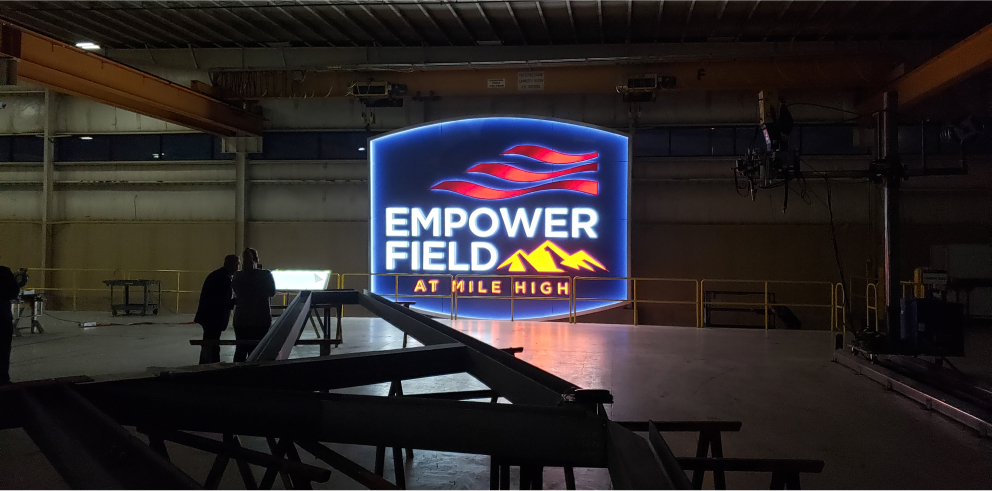

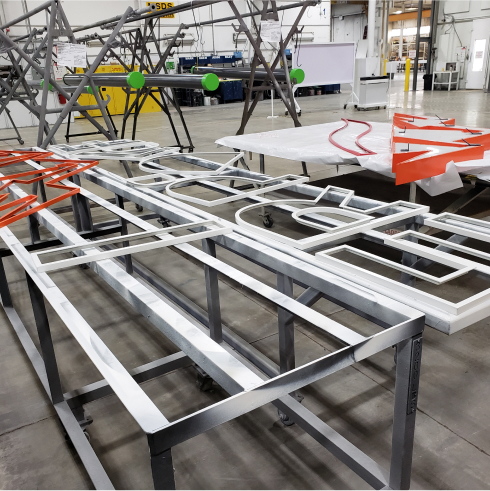
Navigating complex on-site requirements and protocols took detailed planning and coordination.
The project entailed new wall sections, cladding, power runs and structural modifications.

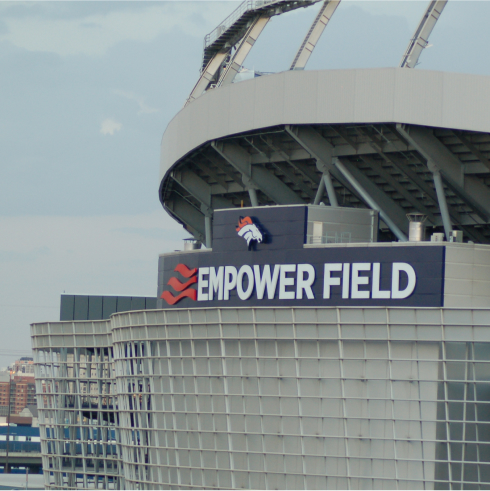

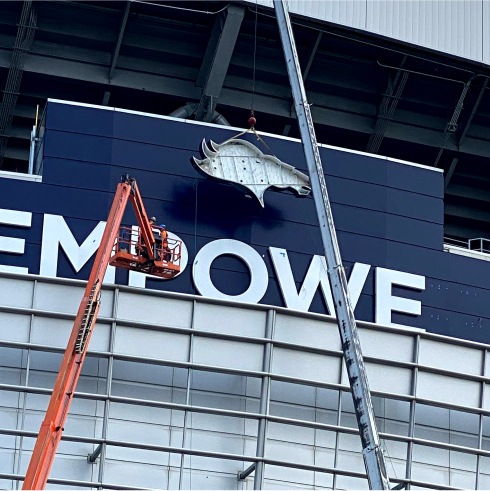
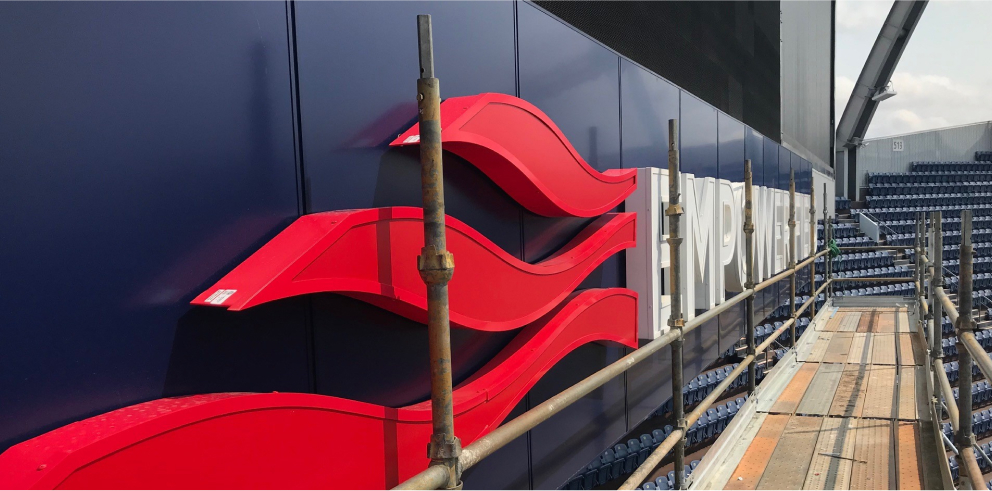




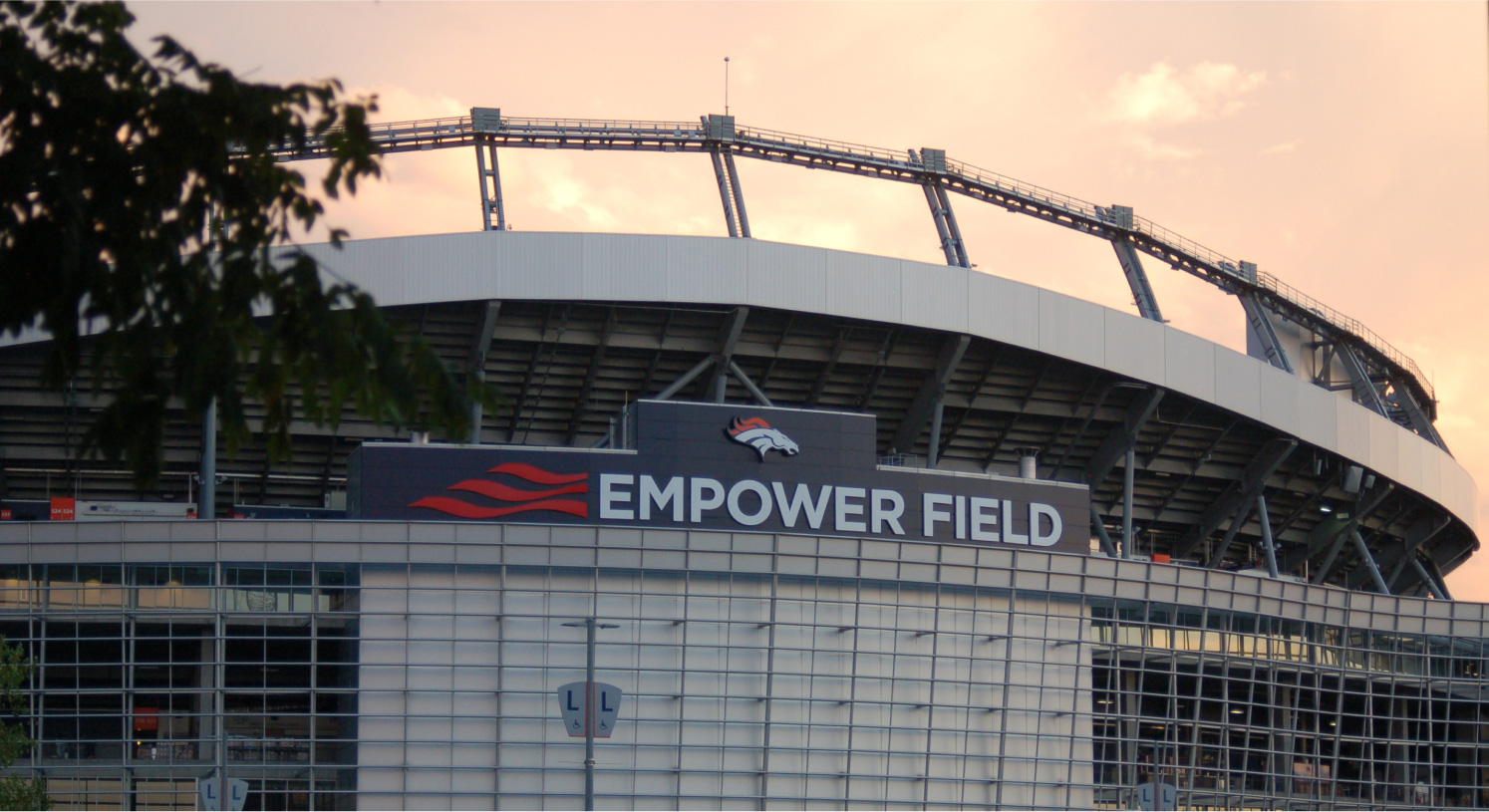
Opportunity 3
Updating exterior wayfinding
With fresh, new primary identification signage installed, we shifted focus to updating the 18-year-old pedestrian and vehicular wayfinding. Our strategy was to follow the existing Comprehensive Sign Plan for the property matching previously approved size restrictions, with an eye toward increasing visibility of key elements.
"When I saw the schedule, I was concerned that we wouldn’t be able to get this all done. I was very surprised to see how fast this all came together."


